Botanical Name: Abies balsamea 'Nana'
Common Name: dwarf balsam fir
Family: Pinaceae
Distribution/Origin: North America, garden origin
Leaf: simple, need like, spiralled arrangement, leathery texture, distinctive smell, linear shape, entire margins
Bud:
Flower: no flowers
Fruit/Seed: aborted
Stem/Bark: smooth, red-brown
Size: 2-3’ height, 3-5’ spread
Habit: dense, slightly spreading
Form: mounded, globose, flattened with age
Soil conditions: acidic, well drained, rich, sandy
Moisture: consistent moisture
Sun: filtered shade, full sun
Exposure:
Landscape use: container planting, group/mass planting, mixed borders, winter interest, rock gardens
Notes: slow growing




Botanical Name: Abies grandis
Common Name: grand fir
Family: Pinaceae
Distribution/Origin: British Columbia, northwest US
Leaf: flat, rounded tips, two white stomatal bands, simple, linear shape, entire margins, different needle lengths
Bud: 3 or more buds present at terminal ends
Flower: male cone brown, scale bracts are short and hidden in a closed cone, upright position
Fruit/Seed: winged seeds, green, cylindrical, Sept-Oct
Stem/Bark: moderately fissured, grey, thin with resin blisters
Size: 98-200’ height, 32-50’ spread
Habit: upright
Form: columnar, narrowly pyramidal
Soil conditions: well drained, rich mineral soils
Moisture: evenly moist
Sun: filtered shade, full sun
Exposure: tolerant of heavy winds
Landscape use: forestry, specimen,
Notes: Okanagan people built canoes from grand fir, also used pitch to give a good finish to paddles and bows

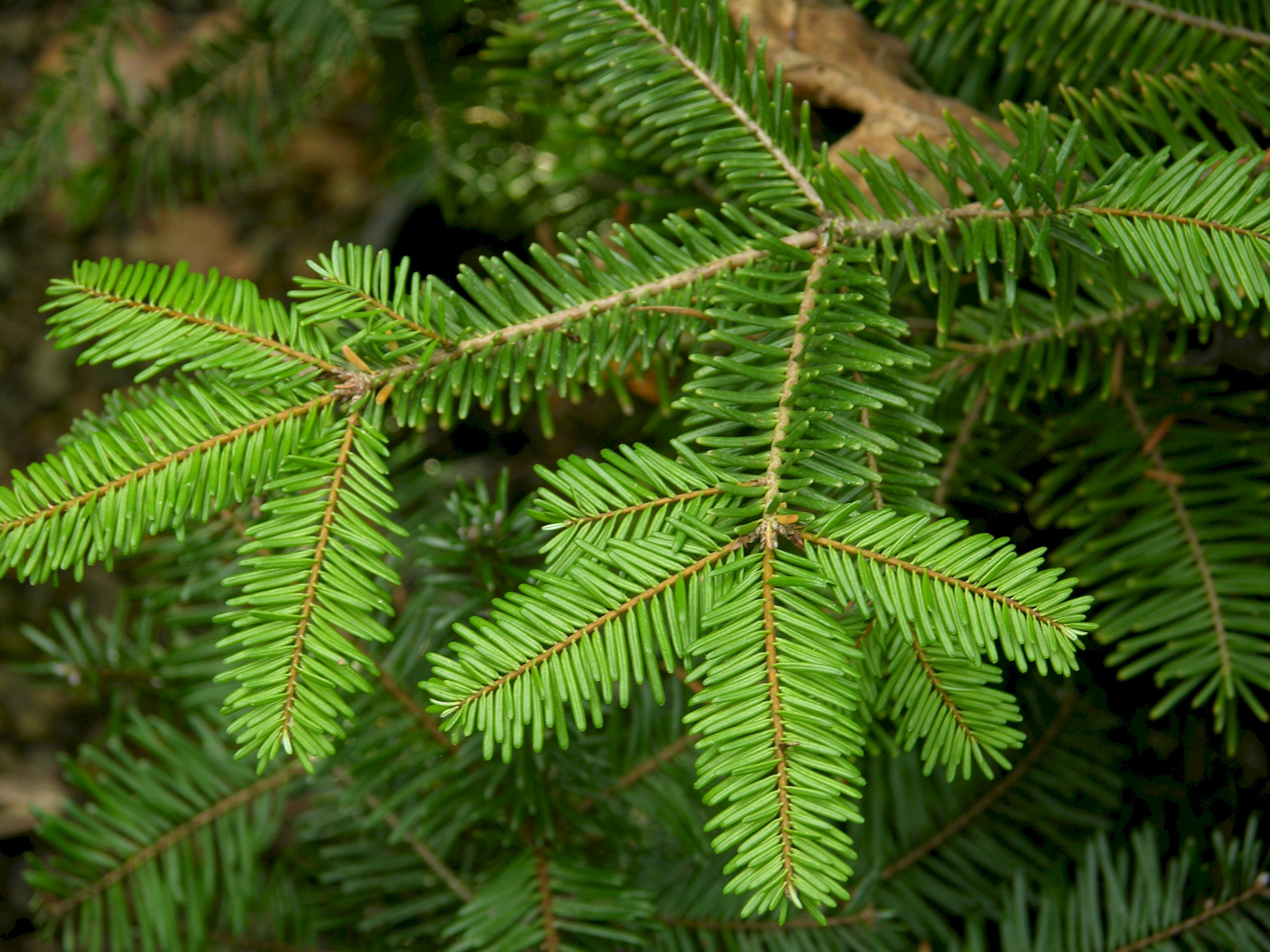

Botanical Name: Abies koreana
Common Name: Korean fir
Family: Pinaceae
Distribution/Origin: Asia
Leaf: flattened, glossy dark green surface, two broad white bands of stomata below, slightly notched at tip, spiralled, linear with entire margins
Bud:
Flower: male cone, brown
Fruit/Seed: cones dark purple blue before maturity, scale bracts long, emerge between scales, upright
Stem/Bark: grey, resin blisters
Size: 22-32’ height, 16-22’ spread
Habit: upright, compact, dense branching
Form: widely pyramidal, conical
Soil conditions: rich, well drained, acidic
Moisture: evenly moist
Sun: part sun/shade
Exposure:
Landscape use: specimen plant, tall background, wind break, winter interest
Notes: slow growing, good choice for small gardens or spaces




Botanical Name: Abies lasiocarpa
Common Name: subalpine fir
Family: Pinaceae
Distribution/Origin: North America
Leaf: flat, linear, glaucous green, broad stripe of stomata above with 2 blue-white stomatal bands below, blunt ends often notched at tips
Bud:
Flower: erect, dark blackish purple with fine yellow-brown pubescence
Fruit/Seed: winged seeds
Stem/Bark: fresh leaf scars are reddish, smooth, grey with resin blisters in youth, rough and fissured with age
Size: 66-160’ height,
Habit: upright, erect
Form: narrow conic crown, pyramidal
Soil conditions: average, can grow in nutritionally poor soils
Moisture: even moisture
Sun: sun, full shade to semi shade
Exposure:
Landscape use: woodland garden canopy, naturalized areas, alpine gardens
Notes: some aboriginal tribes washed and drank with subalpine boil for purification and to make their hair grow. Trees pitch was also commonly chewed to clean teeth

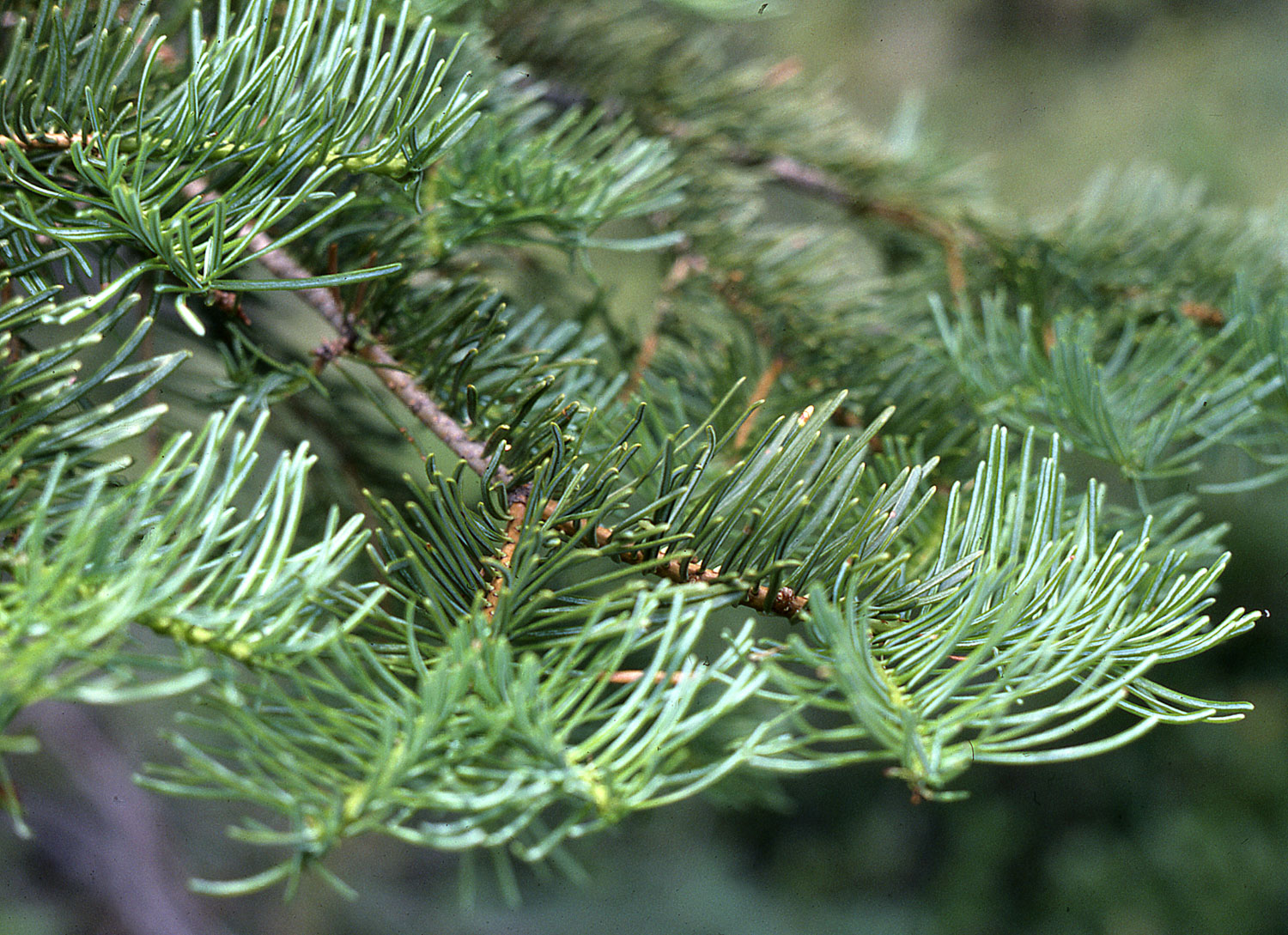


Botanical Name: Cedrus atlantica
Common Name: atlas cedar
Family: Pinaceae
Distribution/Origin: Africa, Europe
Leaf: blue green needles in clusters, linear, spiraled arrangement, leathery texture, downy shoots
Bud:
Flower: barrel like cones
Fruit/Seed: winged seeds, brown to green
Stem/Bark: smooth, lightly fissured, grey
Size: up to 98’ height, 22-32’ spread
Habit: horizontal, open
Form: widely pyramidal
Soil conditions: acidic, well drained, deep, loams
Moisture: average
Sun: full sun
Exposure: drought tolerant once established
Landscape use: specimen, tall background, windbreak
Notes: George Harrison references this species in “Beware of Darkness”




Botanical Name: Cedrus deodara
Common Name: Himalayan cedar
Family: Pinaceae
Distribution/Origin: south Asia, India
Leaf: needles sharp, whorled parallel venation, glabrous surfaces, entire margins, acicular shape, drooping appearance
Bud:
Flower: male cone, green to yellow
Fruit/Seed: cone, winged seeds
Stem/Bark: plated, grey, taproots, inner bark aromatic
Size: up to 100’ height x 82’ spread
Habit: horizontal branching, whorled branchlets, upright
Form: oval-horizontal, widely pyramidal
Soil conditions: well drained
Moisture: moderate
Sun: full sun
Exposure:
Landscape use: specimen plant
Notes: great demand as timber; highly durable, rot resistant, fine close grain that looks mighty fine with a polish. Insects are repelled by scented woods and an oil is often distilled and applied to the hooves of horses, cattle and camels. English common name is also derived from Sanskrit for “Wood of the Gods”
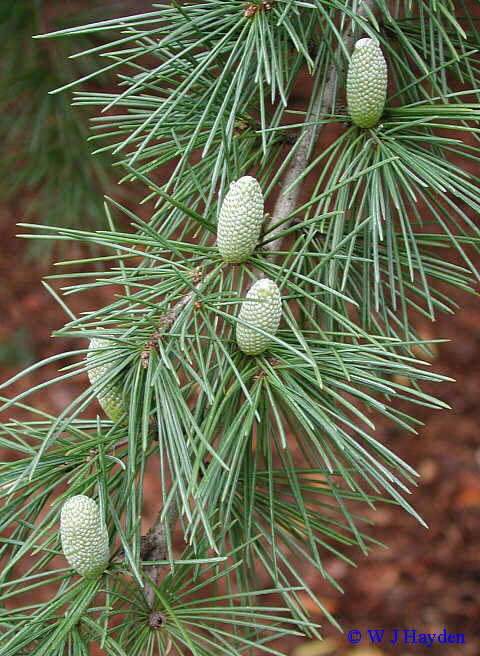
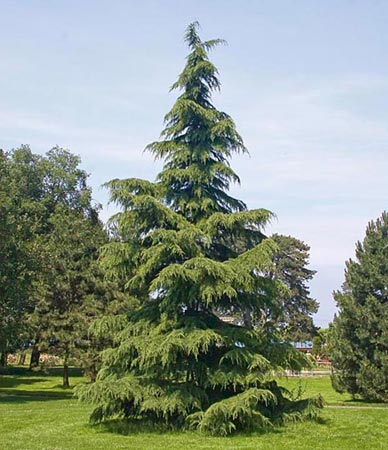

Botanical Name: Cedrus libani
Common Name: cedar of Lebanon
Family: Pinaceae
Distribution/Origin: Mediterranean, Asia
Leaf: needle like, spaced out in long shoots, in clusters on short shoots, green to glaucous blue-green, stomatal bands on all sides,
Bud:
Flower: male cone, green-brown
Fruit/Seed:
Stem/Bark: short shoot long shoot,
Size: 40-60’ height, 40-60’ spread
Habit: level branching, spreading, horizontal
Form: conical crown in youth, broadly tabular crown with age
Soil conditions: deep, well drained, acidic loams
Moisture: medium
Sun: full sun
Exposure: drought tolerant, protect from cold winds
Landscape use: winter interest, woodland garden canopy
Notes: national emblem of Lebanon




Botanical Name: Larix sp.
Common Name: Larch
Family: Pinaceae
Distribution/Origin: Europe
Leaf: needle like, linear shape, entire margins, sheathing soft, flexible
Bud: buds small, spherical, fused with branch
Flower: male cone, red
Fruit/Seed: brown, cone, winged seeds
Stem/Bark: lightly fissured, grey-brown
Size: 50-70’ height, 22-32’ spread
Habit: pendulous, spreading, stiffly upright, twiggy
Form: narrowly pyramidal
Soil conditions: acidic, well drained
Moisture: moderate
Sun: full sun
Exposure:
Landscape use: fall interest, screening, specimen plant, tall background
Notes: valued for its tough, waterproof and durable qualities (great for boat building)




Botanical Name: Picea abies
Common Name: Norway spruce
Family: Pinaceae
Distribution/Origin: Europe
Leaf: radial, short, prickly, leave pegs when removed, acicular shape, entire margins glabrous surface, quadrangular in cross section
Bud:
Bud:
Flower: long and narrow cones, pendulous, male
Fruit/Seed: winged seed, black with pale brown wings
Stem/Bark: plated, single leader, grey to brown
Size: 72-98’ height, 22-32’ spread
Habit: stiffly upright
Form: widely pyramidal
Soil conditions: acidic, well drained, rich
Moisture: average, does not like to dry out
Sun: full sun to partial shade
Exposure:
Landscape use: forestry, screening, specimen plant, tall background, windbreak
Notes: first gymnosperm to have its genome sequenced, one clone has been measured at 9550 years old




Botanical Name: Picea glauca
Common Name: white spruce
Family: Pinaceae
Distribution/Origin: North America
Leaf: spiraled needles, bluish green, linear, rhombic in cross section, glaucous blue green above with several thin lines of stomata, undersides with 2 pale lines of stomata
Bud:
Flower: reddish male cones
Fruit/Seed: brown winged seeds, oblong and acute at base, average number of seeds between 32-130
Stem/Bark: thin, scaly, flaking off in circular plates
Size: 72-98’ height,
Habit: dense, slow growing
Form: widely pyramidal, conic in youth, cylindric with age
Soil conditions: widely adaptable
Moisture: medium
Sun: full sun
Exposure:
Landscape use: specimen, windbreak, screen
Notes: grows at high elevations in the wild




Botanical Name: Picea omorika
Common Name: Serbian spruce
Family: Pinaceae
Distribution/Origin: Balkans
Leaf: leathery, soft/flexible, glabrous surfaces, acicular shape, entire margins, spirally arranged
Bud:
Flower: reddish brown cones (male)
Fruit/Seed: cone, winged seeds
Stem/Bark: grey, cracked and fissured, slightly plated, resin blisters
Size: 40-60’ height, 15-20’ spread
Habit: pendant branches ascending at tip, stiffly upright
Form: narrow, pyramidal-columnar
Soil conditions: average, well drained, prefers rich
Moisture: medium
Sun: full sun to partial shade
Exposure: tolerant of deer, air pollution
Landscape use: winter interest, specimen, group plantings, street tree
Notes: specific epithet is Serbian for “spruce”

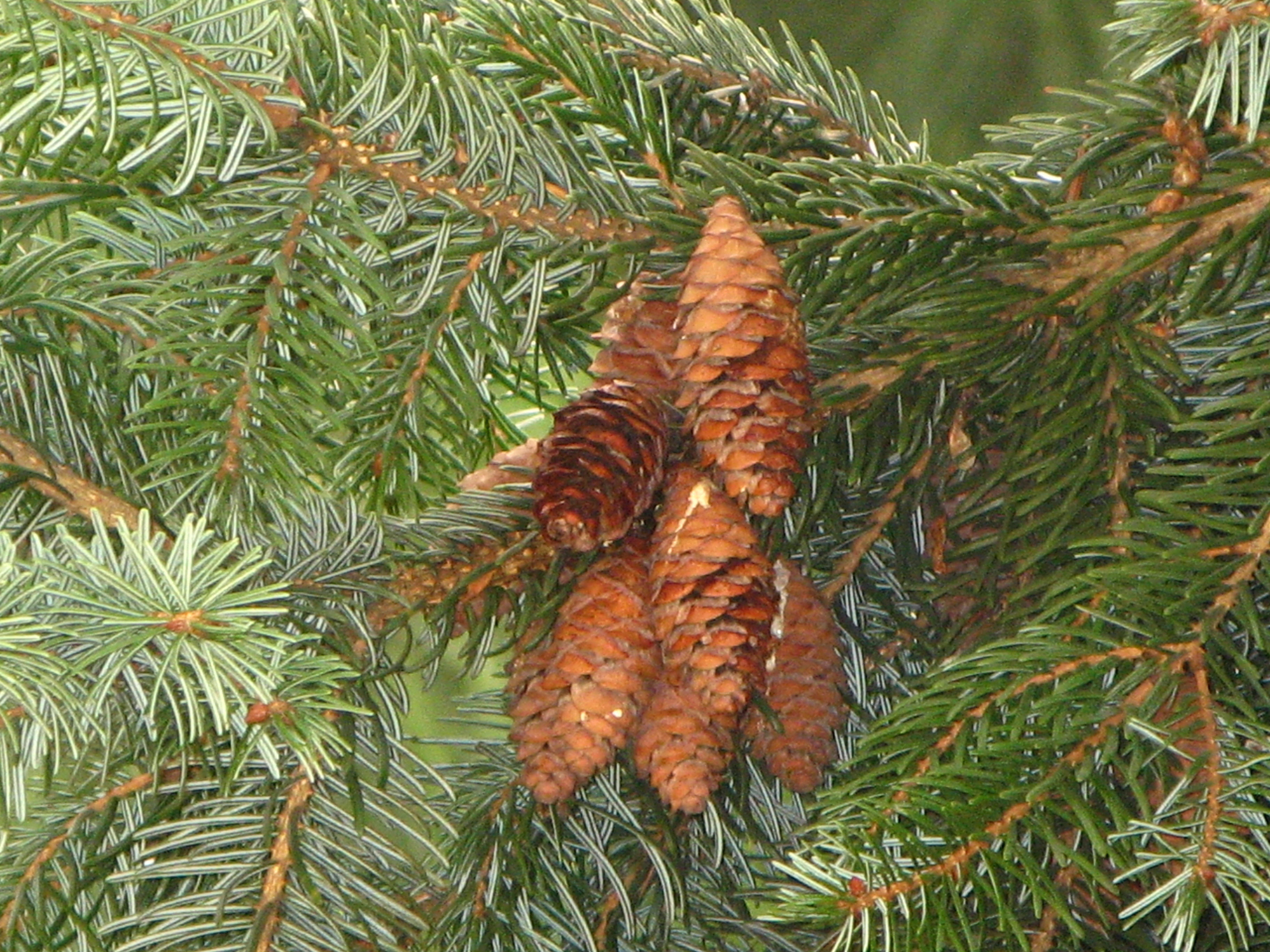

Botanical Name: Picea pungens
Common Name: Colorado blue spruce
Family: Pinaceae
Distribution/Origin: US
Leaf: very sharp prickly needles, greyish blue, spiralled, glabrous surfaces, acicular shape
Bud:
Flower: male cone
Fruit/Seed: brown winged seeds
Stem/Bark: exfoliating, plated, grey to brown, thin
Size: 50-72’ height, 16-22’ spread
Habit: dense, horizontal lower branching, stiffly upright
Form: narrowly pyramidal
Soil conditions: well drained,
Moisture: moderate
Sun: full sun
Exposure:
Landscape use: alpine, screening, specimen, winter interest
Notes: specific epithet means “pointed” referring to the needles




Botanical Name: Pseudolarix amabilis
Common Name: golden larch
Family: Pinaceae
Distribution/Origin: eastern China
Leaf: soft, light green above and blue beneath, tuft like clusters, long and broad
Bud:
Flower: male catkin like cones appear in clusters, scales tapered to point
Fruit/Seed: erect reddish brown cones
Stem/Bark: fissured, reddish brown
Size: 30-60’ height, 20-40’ spread
Habit: horizontal branching and drooping branchlets
Form: broadly conical
Soil conditions: acidic, organically rich loams
Moisture: medium
Sun: full sun
Exposure: tolerant of light shade but not full
Landscape use: specimen, large areas
Notes: sometimes used as a bonsai




Botanical Name: Pseudotsuga menziesii
Common Name: Douglas fir
Family: Pinaceae
Distribution/Origin: North America
Leaf: soft, shorter and flatter needles than most pines, alternate, spiraled, flexible, glabrous surface, green, linear shape, entire margins
Bud:
Flower: small male cones, not showy
Fruit/Seed: cones pendulous with mouse tail like bracts
Stem/Bark: very thick, deeply fissured, brownish red, corky, single stem trunk
Size: 40-100’ height, 12-30’ spread
Habit: horizontal, upright
Form: widely pyramidal, cylindrical with age losing lower branches
Soil conditions: well drained, adaptable
Moisture: medium to wet
Sun: full sun
Exposure: do not stand under a Doug fir during a windstorm
Landscape use: large areas, naturalized areas, specimen, forestry, native plantings, wind break, woodland areas
Notes: wind pruned, large branches are dubbed “widow makers”
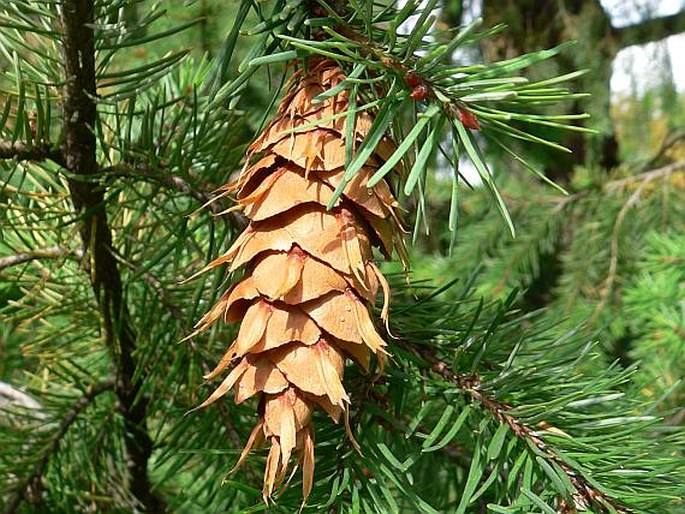
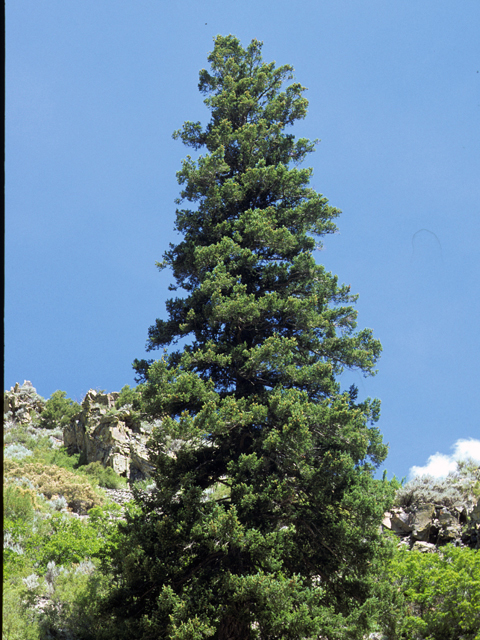

Botanical Name: Tsuga heterophylla
Common Name: western hemlock
Family: Pinaceae
Distribution/Origin: North America
Leaf: flat, 2 white stomatal lines underneath, flexible, soft, flexible, acicular shape, length varies, flat blunt tips, 2 rank along twigs, finely serrated margins
Bud:
Flower: male cone, yellow, small
Fruit/Seed: brown winged seeds (cone)
Stem/Bark: deeply fissured, grey to brown, thin
Size: up to 98’ height, 50-80’ spread
Habit: stiffly upright, tree top “nods” and droops to one side
Form: widely pyramidal
Soil conditions: acidic, well drained, organically rich
Moisture: moderate, prefers moist
Sun: full sun, partial shade
Exposure: good for erosion control
Landscape use: forestry, hedgerow, reclamation, sheared hedge, specimen plant, tall background
Notes: Western hemlock boughs are used to help collect herring eggs during the spring spawn in southeast Alaska. They provide an easy collectible surface for the eggs to attach to as well as adding a distinctive flavoring.




Botanical Name: Tsuga mertensiana
Common Name: mountain hemlock
Family: Pinaceae
Distribution/Origin: North America
Leaf: needle, spiraled, soft and flexible, glabrous surfaces, blue green in color, acicular shape, blunt tip, grooved or ridged surface
Bud:
Flower: male cones, blue pendulous, cylindrical, thin flexible scales
Fruit/Seed: purple to brown winged seeds, slender long wings
Stem/Bark: moderately fissured, grey to brown, thin, cracked
Size: 30-50’ height, 15-20’ spread
Habit: pendulous, upright
Form: narrowly pyramidal
Soil conditions: humus rich, coarse textured, loose, well draining
Moisture: even moisture to wet
Sun: full sun, partial shade
Exposure: becomes shrubby krummholz with age on windy sites
Landscape use: container planting, forestry, reclamation, screening, shade tree, specimen, wetland, bogs, wildlife food, wind break
Notes: grows slowly, usually found on cold subalpine sites 
No comments:
Post a Comment